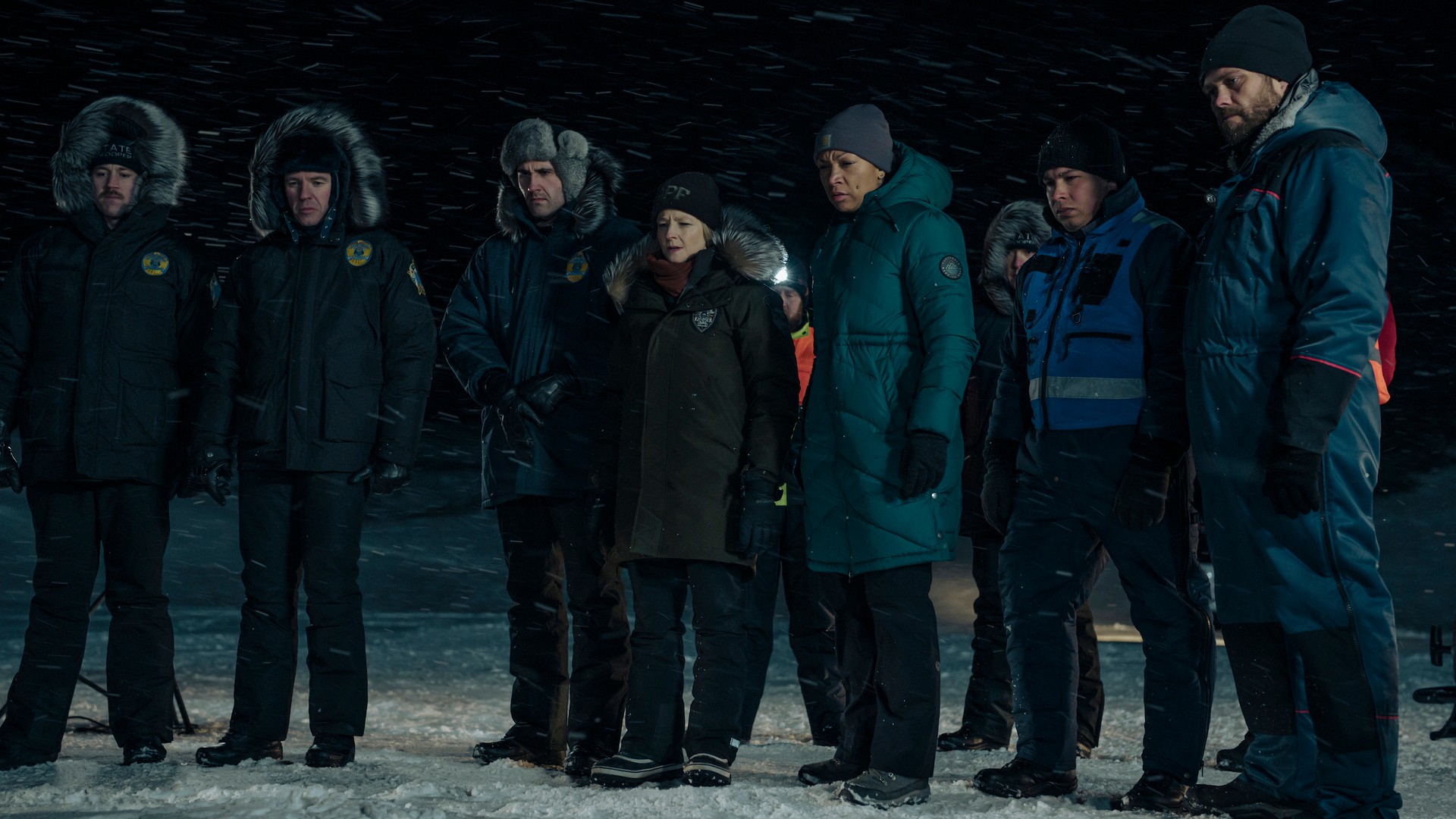
This article contains spoilers for True Detective: Night Country episode 1.
True Detective season 4, subtitled True Detective: Night Country, isn’t shy about acknowledging its influences. In the first episode alone, the series showcases a DVD copy of John Carpenter’s The Thing, a well-worn edition of Cormac McCarthy’s Blood Meridian, and even several instances of the swirly “Carcosa” symbol from True Detective season 1.
There’s another major influence at play, however, and it comes directly from the terrifying annals of history. While episode 1 didn’t explicitly shout it out as an inspiration, showrunner Issa López mentioned it when speaking to Den of Geek and other outlets before season 1 premiered.
“Some mysteries that obsessed me as a child were the Dyatlov Pass incident and the Mary Celeste,” Lopez said.
The Mary Celeste refers to an 1872 mystery in which the American sailing vessel, the Mary Celeste, was discovered in the middle of its shipping route missing its entire crew. It’s a spooky mystery, to be sure, but its effect on True Detective season 4 is not fully evident yet. The Dyatlov Pass incident on the other hand, has clearly lent its DNA to the early goings of Night Country. Allow us to explain how.
What Is the Dyatlov Pass Incident?
If you’re like me and you spend an inordinate amount of time reading creepy “AskReddit” threads, you’ve undoubtedly already heard of the Dyatlov Pass mystery. Any time a thread in Reddit’s r/AskReddit forum comes forward with a prompt akin to “What’s the creepiest real life mystery we know of?”, Dyatlov Pass is sure to pop up in the replies and it’s not hard to see why. The Dyatlov Pass incident is the stuff of nightmares. Be sure to read the Wikipedia entry in full over here (really: it’s like a top 10 Wikipedia page of all time), but here’s a brief recap of the spooky events.
In early February 1959, nine experienced Soviet hikers, led by Igor Alekseyevich Dyatlov, were making their way through the northern Ural Mountains in Russia when … something bad happened and they died. What happened exactly? Well, that’s where all the shrug emojis begin. When no one in the group had made contact with the outside world by February 20, the hikers’ friends and family requested a rescue operation from the Soviet Union. Searchers were dispatched and happed upon the Dyatlov party’s tent on Kholat Syakhl (which creepily means “dead mountain” in Russian). And that’s where the horror began.
One searcher claimed that “the tent was half torn down and covered with snow. It was empty, and all the group’s belongings and shoes had been left behind.” They later determined it was likely that the tent was cut open from the inside. Nine sets of footprints (none of which were wearing a pair of shoes) led to a nearby wood over a kilometer away. That’s where the first two bodies were found: shoeless, in underwear, and beside the remains of a small fire. Three more corpses were found closer to the tent. The remaining four hikers’ bodies weren’t discovered for another two months in a nearby ravine and their’s was the strangest, most grim tableau yet. One body was missing its eyes, tongue, lips, and cheeks. Another body was missing its eyes and yet another its eyebrows.
The initial autopsy reports indicated that six hikers died of hypothermia and three died of fatal injuries but that only led to more questions that lingered for decades. What event would cause nine experienced, able-bodied people to cut through their tent and scamper, under-dressed, into the northern Russian winter (where temperatures hover between -10 and -20 degrees Fahrenheit). In 2019, Russia re-opened its investigation into the incident and concluded that a “slab avalanche” was the most likely cause of the incident. And truthfully, the report does sound pretty convincing. The New Yorker‘s Douglas Preston summed up the relevant points to establish the following potential narrative:
“The most appealing aspect of Kuryakov’s scenario is that the Dyatlov party’s actions no longer seem irrational. The snow slab, according to Greene, would probably have made loud cracks and rumbles as it fell across the tent, making an avalanche seem imminent. Kuryakov noted that although the skiers made an error in the placement of their tent, everything they did subsequently was textbook: they conducted an emergency evacuation to ground that would be safe from an avalanche, they took shelter in the woods, they started a fire, they dug a snow cave. Had they been less experienced, they might have remained near the tent, dug it out, and survived. But avalanches are by far the biggest risk in the mountains in winter, and the more experience you have, the more you fear them. The skiers’ expertise doomed them.”
Regardless of how plausible the slab avalanche explanation is, the Dyatlov Pass incident still looms large as a campfire tale for the internet age. That’s probably because each potentiality is equally awful. A slab avalanche? Terrifying. A violent attack from the nearby indigenous Mansi people? Terrifying? Something downright supernatural? Terrifying.
The Dyatlov Pass incident has a way of capturing the imagination and that’s why the first episode of True Detective: Night Country borrows directly from it. If the discovery of several ill-dressed corpses frozen in the icy tundra seemed familiar, now you know why.
The post The Horrifying True Story That Inspired True Detective Season 4 appeared first on Den of Geek.




